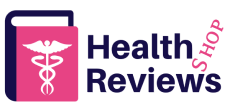Healthcare is a fundamental human right, and it should be accessible to everyone regardless of their financial situation. However, the cost of healthcare has been on the rise over the years, making it difficult for many people to access quality care. In this article, we will explore different options that can help reform our current healthcare system to make it more affordable and effective.
One option that has gained popularity in recent times is the implementation of a single-payer healthcare system. This type of system would eliminate private insurance companies and have the government take control of healthcare coverage. Proponents argue that this would reduce administrative costs and allow for greater negotiating power when it comes to drug prices. Additionally, it could potentially cover all Americans, including those with preexisting conditions who are often denied coverage by private insurers.
Another option is to focus on improving the quality of care rather than just increasing access. One way to do this is through value-based care, which rewards providers based on patient outcomes instead of the number of services they provide. This approach encourages providers to prioritize preventative care and coordination of care among specialists, ultimately leading to better patient outcomes at a lower cost.
A third option is to increase competition among healthcare providers. By allowing patients to shop around for the best price and quality, providers would be incentivized to improve their services and keep costs low. This approach has worked well in other industries such as air travel and hotel accommodations, but its effectiveness in healthcare remains unclear.
Finally, technology can play an essential role in healthcare reform. Telemedicine, remote monitoring, and electronic medical records can significantly reduce costs while also improving patient outcomes. For instance, telemedicine allows patients to receive care from home, eliminating the need for expensive hospital stays or doctor visits. Remote monitoring enables providers to monitor patients’ vital signs remotely, reducing the risk of complications and readmissions. Electronic medical records not only streamline communication between providers but also ensure accuracy and completeness of patient information.
In conclusion, there is no one-size-fits-all solution to healthcare reform. Each option presents unique challenges and opportunities. What matters most is ensuring that every American has access to high-quality, affordable healthcare. As policymakers continue to debate various proposals, it is crucial that we engage in meaningful conversations about how to achieve this goal.
